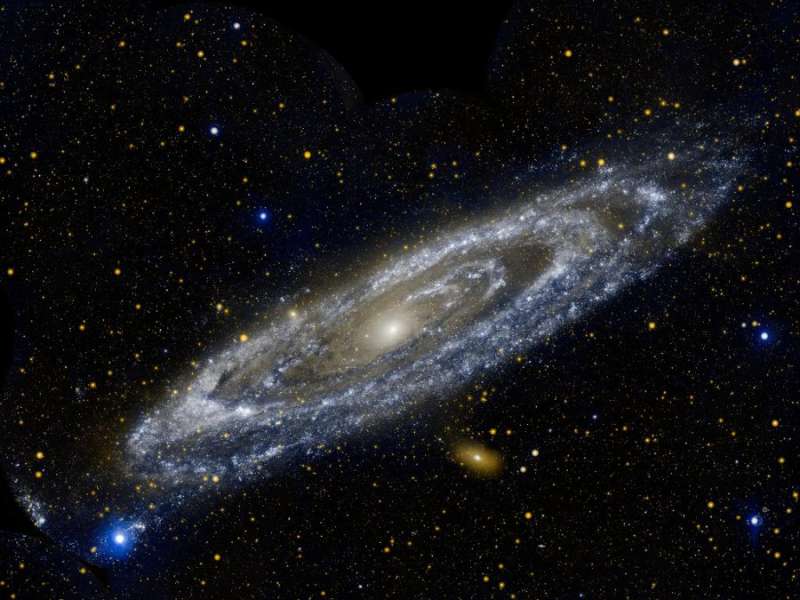Credit & Copyright: GALEX, JPL-Caltech,
NASA
Explanation:
A mere 2.5 million light-years away the Andromeda Galaxy, also
known as M31, really is just next door as large galaxies go.
So close
and spanning
some 260,000 light-years, it took 11 different image fields from the
Galaxy Evolution Explorer (GALEX) satellite's
telescope to produce this gorgeous portrait of the spiral galaxy in
ultraviolet light.
While its spiral arms stand out in
visible light images of Andromeda,
the arms look more like rings in
the
GALEX ultraviolet view,
a view dominated by the energetic light from hot, young, massive stars.
As sites of intense star formation, the rings have been interpreted as
evidence Andromeda collided with its smaller neighboring elliptical
galaxy M32 more than 200 million years ago.
The large Andromeda galaxy
and our own Milky Way are the most massive members of the
local
galaxy group.
1999 2000 2001 2002 2003 2004 2005 2006 2007 2008 2009 2010 2011 2012 2013 2014 2015 2016 2017 2018 2019 2020 2021 2022 2023 2024 2025 |
Январь Февраль Март Апрель Май Июнь Июль Август Сентябрь Октябрь Ноябрь Декабрь |
NASA Web Site Statements, Warnings, and Disclaimers
NASA Official: Jay Norris. Specific rights apply.
A service of: LHEA at NASA / GSFC
& Michigan Tech. U.
|
Публикации с ключевыми словами:
ultraviolet - star formation - spiral galaxy - Туманность Андромеды - спиральная галактика - спиральная структура - Ультрафиолетовое излучение
Публикации со словами: ultraviolet - star formation - spiral galaxy - Туманность Андромеды - спиральная галактика - спиральная структура - Ультрафиолетовое излучение | |
См. также:
Все публикации на ту же тему >> | |
